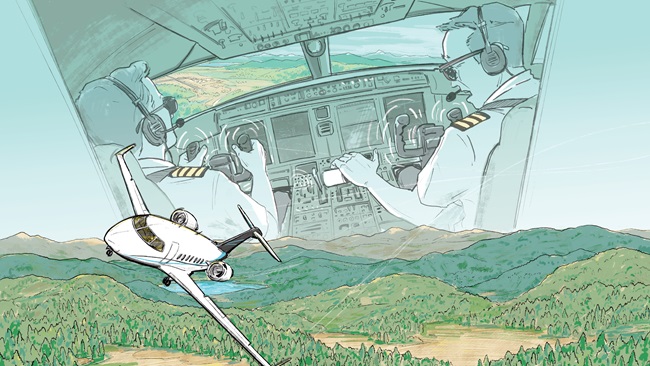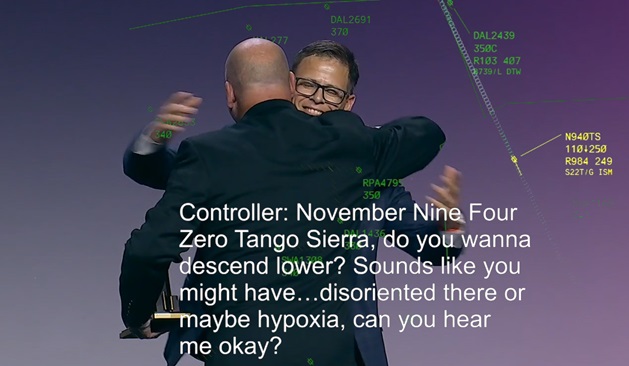What makes a good PIC?
Simple rules to live by in the air
In 1986, minister and author Robert Fulghum published a short collection of essays titled, “Everything I Need to Know I Learned in Kindergarten.”
The premise was that if adults followed the same rules we teach our children—share, be kind, listen to others—the world would be a better place. The book was widely criticized for being trite, saccharine even. I don’t know about you, but I like it when people keep things simple. It turns out lots of other folks would agree. To date, Fulghum’s little book has sold seven million copies. Well, seven million and one now. I just bought my son a copy for Christmas.
In aviation circles, the discussion often centers around serious business, competency, proficiency. You know, the things that keep us alive. But many times, there’s another element to consider, which is how you treat the pilot sitting next to you, particularly if you are the pilot in command. Maybe you’re the captain on a multi-pilot aircraft, or a flight instructor, or maybe you just like to take new pilot friends with you to get that $100 hamburger. Whoever it is, your ability to manage that relationship is crucial to your safety. The good news is, it’s not complicated. Any kindergartner can tell you the essentials here.
Years ago, when the ink on my commercial certificate was still wet, I got a part-time job flying right seat in a Beechcraft King Air 90. We were flying into Hot Springs, Arkansas, where the airport sits nestled between a large lake and some high terrain. Throw in a low ceiling and instrument approach down to minimums and you have the perfect conditions to stress the cockpit crew. The captain was flying. I was on radios. A couple of miles from the runway, he said, “Where’s my callout?” His tone was not friendly. I had received maybe three hours of training on this aircraft from a different individual, and we sure hadn’t covered anything about what I was supposed to say on an instrument approach. Confused, I asked for clarification. He yelled, “You’re supposed to be making altitude callouts. I need a 500, 200, 100.” Now, almost two decades and one airline job later, I know that he wanted me to announce when we reached 500 feet above minimums, 200 feet, and so on. But I sure didn’t understand it then, and boy did he let me know it. With an angry PIC in the left seat flying a challenging instrument approach while also attempting to educate his frazzled right seater, nothing about that situation was safe.
Here’s what that formative aviation experience taught me: Being a good PIC has a whole lot to do with the things we learned as children. Things like…
Do unto others as you would have them do unto you. It’s called the Golden Rule for a reason. So, no yelling in the cockpit. Before you turn the heat on, ask if the other person is cold. (Guilty. Doesn’t anyone else have permanently frozen toes during winter flying?) Don’t show-boat “watch this” type maneuvers if the other pilot is uncomfortable. These things should go without saying, but I only mention them here because I’ve experienced them so many times.
Your way is not the only way. Avoid technedure. Just because you have a certain flying technique does not mean it works for everyone else. Maybe you like two turns of nose-up trim for a steep turn, or a little bit of power on a soft-field landing. But your technique is not official procedure. Don’t confuse the two.
Look for ways to help. A friend of mine, who is a longtime Delta captain, says, “One thing I always try to do as a more experienced pilot is remember that we all started with zero hours.” Managing a crosswind and five airplanes in the traffic pattern may be second nature to you, but it’s task overload for a newer pilot. So be patient and pass along helpful tips whenever possible. (Only if the other pilot has asked for guidance. Nobody likes unsolicited advice.)
Communicate clearly. Be direct about your roles. A little preflight discussion goes a long way here. Who is flying? Who is the PIC? What are the duties of the other pilot? That could be radios, checklists, instrument callouts, or just looking for traffic. It’s always easier to discuss these things in an air-conditioned room than in the cockpit when things start to get stressful.
Stay humble. Just because you have more experience doesn’t mean you’re flawless. If that other pilot voices a concern, listen. What if the captain had listened when his flight engineer questioned whether the runway was clear at Tenerife as they were taking off in 1977? Some 583 people would have been spared. Every viewpoint is valuable in the cockpit.
The world and our cockpits would be a better place if we all treated each other with a little more human decency. Our mothers were right. It’s the simple stuff that matters.


